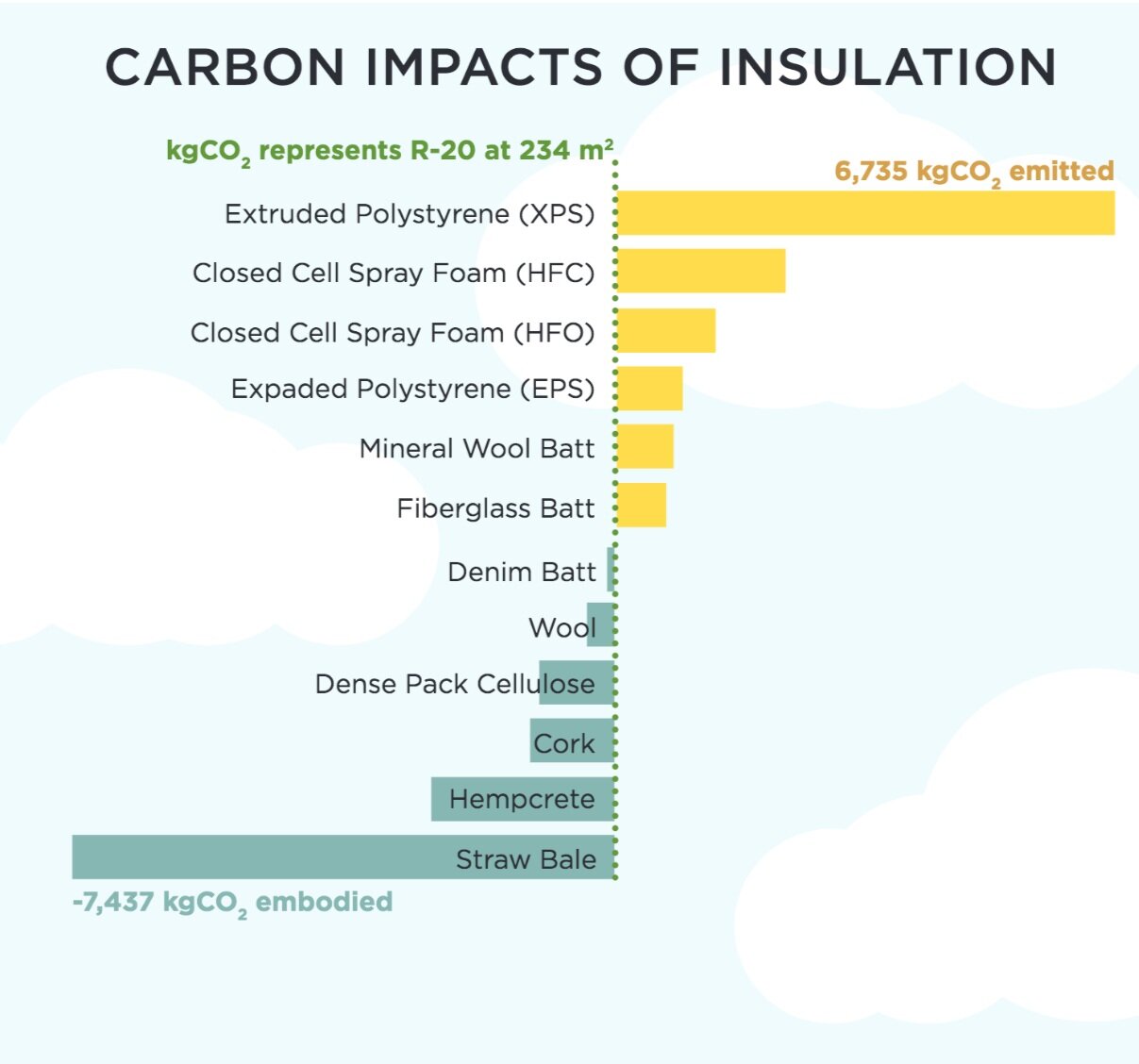Use this, not that: Insulation
By Steve Konstantino
Everyone agrees that we need to insulate our homes to lower energy consumption and improve comfort. Choosing the right insulation not only improves energy performance but also improves indoor air quality, resists mold and improves durability. A good insulation contractor who understands building science should be able to help with the best product for the situation. But be aware that most insulation contractors have certain materials they use and promote. For this reason, it’s important to choose a contractor who aligns with your sustainability and health goals to be sure that you are getting the best recommendations for your projects.
Over the centuries, all sorts of things have been used as insulation (even horse hair!). But today’s options are of three basic types:
Fibrous (fluffy types), including fiberglass, mineral wool, cellulose, cotton batt, sheep wool. These may be “blown-in” or in batt form
Rigid (board types), like extruded polystyrene (XPS), expanded polystyrene (EPS), polyisocyanurate (PIR), mineral wool or wood fiber board.
Spray foam, either closed-cell or open-cell.
Others not as readily available include hemp, straw, cork or blownin wood fiber. (GO Lab of Madison, Maine is working on blown-in, batt, and board wood fiber insulation that may be available soon!)
Fibrous
Best choice: Cellulose
Blown-in cellulose is made from recycled paper. It is usually treated with a non-toxic (to mammals) borate solution as a fire retardant as well as pest repellent and mold inhibitor. Ask for 100% borate treated. Some products include ammonium sulfate, which is not as safe. Cellulose can be used in many ways, including dense packed in walls or roof, or loose filled in attic spaces. In some places, dampsprayed cellulose is common, but it’s not currently available in Maine. Note: All building assemblies should be air sealed first before installing insulation.
Conversely, fiberglass, though the most common insulation, can be less effective because air moves through it easily. Importantly, fiberglass is toxic, with small barbed glass fibers that irritate the skin, eyes and lungs. The fibers of fiberglass insulations can be a trigger for people with respiratory issues.
Other alternatives to fiberglass that address these issues and have a lower carbon footprint or Global Warming Potential (GWP) are sheep wool, wood fiber, and cotton batt insulation.
Rigid insulation
Best choice: Expanded Polystyrene (EPS)
It’s difficult to avoid using foam below grade in contact with soil or concrete or areas that may get wet. Foundation walls and under concrete slabs are the best applications for EPS. It doesn’t absorb water and holds its insulative value in varying conditions. EPS has the lowest GWP of all the foam insulations, which is a consideration if you’re trying to reduce your carbon footprint. EPS is available in varying densities and thicknesses. It is also available with a carbon additive, called GPS or by the brand name Neopor. GPS has the same environmental impacts as EPS, but insulates about 20% better.
Conversely, XPS is more commonly used; it is the “pink” or “blue” board that is carried at most lumber yards. Avoid XPS as it has the highest GWP of any insulation. And among the highest of any construction materials.
Spray foam
Spray foam is useful in certain retrofit situations such as stone or brick foundations, some basement rim joist areas and difficult-to-reach framing areas. Unfortunately, due to the petrochemicals used to make spray foams and the resulting off-gassing, there are no “green” options. In addition, spray foams usually use blowing agents that have high GWP. Manufacturers have been promoting better blowing agents. Some local contractors are using the new blowing agents, including The Breathable Home in Augusta. The new blowing agents result in foam with about 25% of the environmental impact of conventional foam. All foam manufacturers now offer this newer type of foam, but you need to ask for it.
Some things to consider
Most people are familiar with R-value when considering insulation. Although it is important, air sealing (stopping air movement) and thermal bridging (heat transfer through solid materials) should be considered first and have a greater impact on the overall performance of a wall or roof assembly.
Another important decision when choosing insulation material is fire safety and toxicity. Most foam insulations have increased fire risk and emit toxic fumes when burning. Most fire deaths occur from toxic smoke inhalation. Foams and plastics used in construction pose the greatest risk to firefighters and first responders. Most foams release a type of cyanide gas when burning. These are all reasons to minimize the use of foam. The only real exception is below grade or when it is in contact with concrete where there aren’t effective alternatives.
Properly insulating your home is one of the best ways to lower your carbon footprint and improve comfort and health. Interview contractors and choose one who is clear about their product choices and methods. Take time to do research and be knowledgeable about the products you want to use in your home. Getting insulation right will have an immediate and lasting impact. It is worth the effort.
To learn more about insulation, be sure to check out “Choosing Insulation: The green architect’s guide to selecting the right insulation for the right job.”
This article appeared in the Spring/Summer 2021 edition of Green & Healthy Maine HOMES. Subscribe today!




